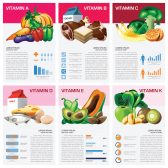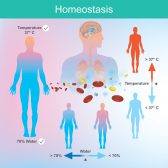Definition
noun
(botany) Cross-fertilization, where fertilization occurs when an ovum of a flower is fertilized by the spermatozoa of another flower
Supplement
In flowering plants, fertilization occurs through pollination, i.e. the transfer of pollen from the anther to the stigma of a plant. The pollen contains the male gametes (sperm cells) that are transferred into the female gametophyte (i.e. ovules of flowering plants and the cones of coniferous plants) via the pollen tube. In regard to pollination, the ovum may be fertilized either by cross-pollination or by self-pollination. Cross-pollination refers to the mode of fertilization wherein the sperm is transferred from the anther of a male flower to the stigma of the female flower. This is also referred to as allogamy (in contrast to the autogamy).
Allogamy generally refers to the fertilization of an ovum of an organism with the spermatozoa of another, usually of the same species. Autogamy, in contrast, is a self-fertilization, e.g. fertilization occurring on a flower when the ovum is fertilized with its own pollen (as in self-pollination). Allogamy is advantageous over autogamy with regard to preventing inbreeding depression, which is the reduced biological fitness in a particular population due to inbreeding. Allogamy is more efficient in encouraging the generation of new genotypes than autogamy.
Compare:
- autogamy
See also:
Related form(s):
- allogamous (adjective, of, relating to, or characterized by, allogamy)







